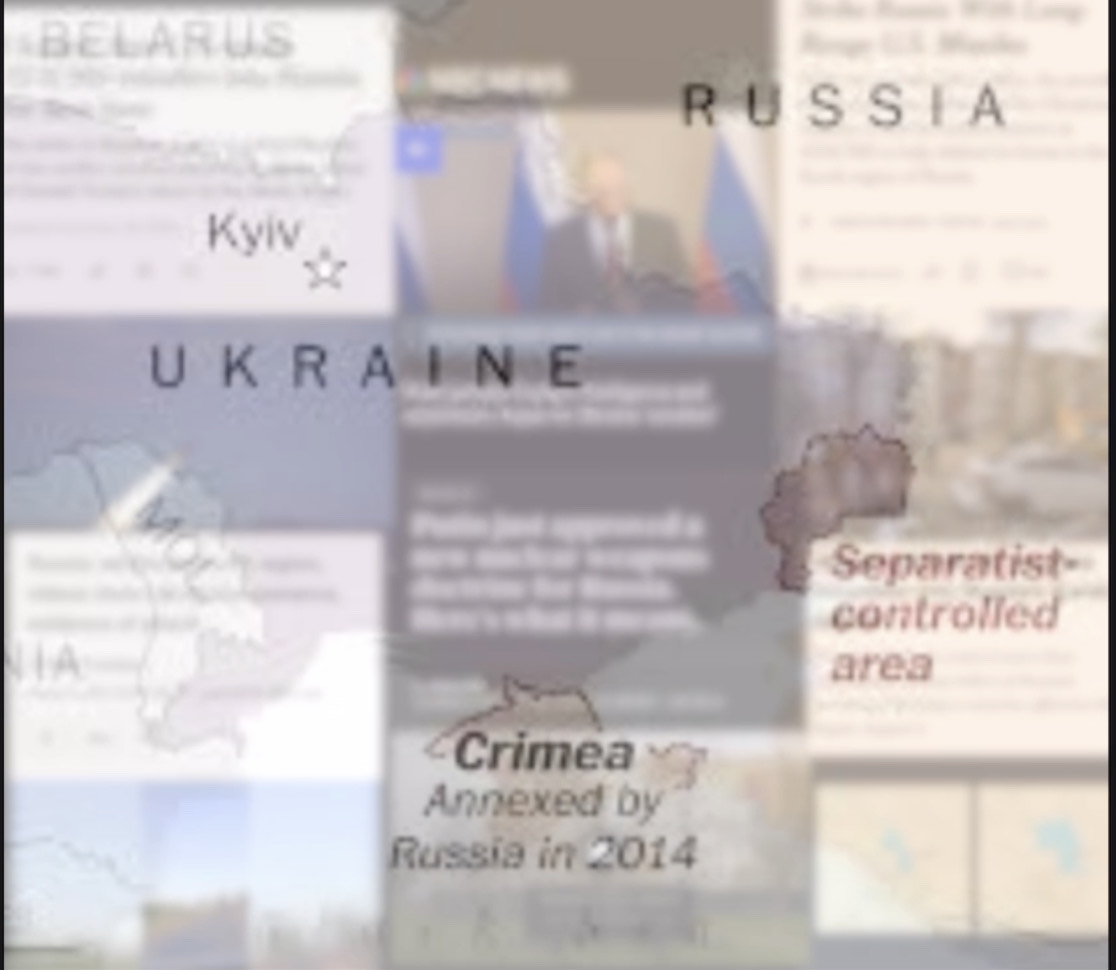The Russia-Ukraine War has just taken a major shift. On November 17th, The United States, Ukraine’s strongest ally, has made a controversial decision that would change the course of Russia’s invasion. Since the start of Ukraine’s Incursion, the tensions have been rising dramatically. This final push by the United States may diminish whatever chances of a diplomatic solution we had left, as Putin responds with more violence and hostility.
The Russian invasion of Ukraine, which began in February 2022, has been a significant and ongoing conflict with widespread repercussions. This military aggression has led to severe humanitarian crises, with thousands of civilians killed and millions displaced. The invasion has drawn international condemnation, leading to severe economic sanctions against Russia and substantial military and financial support for Ukraine from Western nations. The conflict has also had a profound impact on global geopolitics, energy markets, and international relations, highlighting the urgent need for diplomatic efforts to restore peace and stability in the region.
August Kursk Offensive
On August 6th, Ukraine launched an offensive in the Kursk region of Russia, marking the most significant cross-border attack since Russia’s invasion of Ukraine began in February 2022. The region, which has a population of about 1.2 million, is located in western Russia and borders Ukraine. Ukraine’s commander-in-chief claimed Kyiv’s forces gained control of 1,000 km (386 miles) of Russia’s Kursk and 74 Russian settlements in the region. Nearly 200,000 people have been forced to evacuate from border regions. The Russia-Ukraine land border is about 1,974km (1,227 miles) long, and the governor of the Belgorod region declared a state of emergency, blaming the bombardment by Ukraine. This marked the most violent period since the start of the war in 2022, resulting in over 6600 Russian soldier deaths (from the day of the attack until October), over 900 Ukrainian soldier deaths, and 56 civilian deaths[1][2][3]. President Zelenskyy stated that Russian forces have conducted nearly 2,100 artillery strikes on Ukraine’s Sumy region( a region that borders Russia), since June 1, 2024. The incursion aimed to secure its borders from the Russian military. It also marked the first major offensive attack in Russian territory by Ukrainian soldiers. Since then, about 40% of that land gained by Ukraine was lost. Even though much of the territory was gained back by Russia, tensions have risen dramatically since this incident[4][5].
Biden Administration Approval of US Weapons
In a bold and controversial move, on November 17th, Joe Biden authorized the use of United States weapons to directly bomb Russian land. This is the first time foreign weapons have been used in an offensive situation. This decision, aimed at strengthening the ally’s defense capabilities amidst rising regional tensions, has sparked a heated debate both domestically and internationally. Supporters argue that this gesture reinforces strategic alliances and promotes regional stability, while critics warn of the potential for escalating conflicts and the risks associated with arming another nation. The president’s decision underscores the complex dynamics of global diplomacy and the delicate balance of power in international relations. As the weapons are shipped, the world watches closely to see the broader implications of this significant policy shift.
On November 19th, Ukraine launched American-made ATACMS missiles into Russia for the first time. The Russian Defense Ministry dismissed the attack as mainly ineffectual, claiming that five of six missiles fired at a target in the Bryansk region of the nation were shot down and that the sixth was damaged. According to Ukrainian officials, the strike set fire to a weapons stockpile in Karachev, which is roughly 250 miles south of the Kremlin and a little over 70 miles from the Russia-Ukraine border. In a dramatic battle to cling onto Russian territory captured during the summer, Kyiv’s forces now have a greater ability to reach military personnel, facilities, and equipment due to the guided ballistic missile. After months of rejecting Ukrainian requests, the policy change appeared to have been brought about by North Korea sending over 10,000 elite troops to the Kursk region of Russia in an apparent attempt to help Moscow in the bloody conflict there. Prior to this decision, The Biden Administration only permitted Ukraine to utilize its weapons to strike Russian targets in Ukraine’s seized territories, primarily the Crimean Peninsula [6][7].
Nuclear War Threats
In response to US President Joe Biden’s decision to permit Ukraine to employ American-supplied longer-range missiles to strike targets inside Russian territory, President Vladimir Putin has publicly lowered the threshold for Russia to use its nuclear weapons. The new strategy permits Moscow to respond with nuclear weapons even in the event that any country backed by a nuclear state launches a conventional strike on Russia[8]. Putin has threatened to use nuclear weapons several times, and Russia has warned the West that it would consider the United States and its NATO allies directly involved in the war if Washington permitted Ukraine to launch Western-made missiles deep into its territory[9]. Many people perceive Putin’s act as a threat to nuclear war.
Trump’s Reelection
Putin criticized Biden and his administration for the constant support and funding to Ukraine. However, in a recent interview with reporters in Kazakhstan, he claimed that Donald Trump’s reelection will lower the tensions that Biden has raised. He said, “[Trump] is still an intelligent person and already quite experienced. It seems to me he will find a solution[10].” In terms of foreign aid, many people are wary of Trump’s plan for U.S. involvement in the war as the reason for his first presidential impeachment was due to withholding aid to Ukraine[11]. However, many others see the acts of the Biden Administration as pure warmongering and expect Trump’s selective engagement in foreign affairs to be a breath of fresh air[12].



